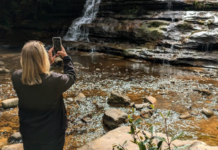Trekking in Himachal Pradesh is a unique opportunity to connect with nature, and it’s vital to engage in sustainable practices to protect these environments for future generations.
Himachal Pradesh offers diverse trekking experiences, and choosing the best time depends on the trek you wish to embark on. The ideal period for most treks is between March and June, and September to November. During these months, the weather is pleasant, and the trails are accessible. Spring (March to April) brings blooming flowers, while autumn (September to November) offers clear skies and stunning vistas. Monsoon (July and August) is generally avoided due to heavy rainfall, which can make trails slippery and prone to landslides. Winter treks are also popular, especially in December and January, for those looking to experience snow-covered landscapes, though these treks require more preparation and endurance Triund Trek.
McLeod Ganj, near Dharamshala, serves as the base for the famous Triund Trek, offering breathtaking views of the Dhauladhar range. Manali is the gateway for several treks like Hampta Pass, Beas Kund, and the challenging Pin Parvati Pass. Kasol, a small village in the Parvati Valley, is the starting point for treks like Kheerganga and Sar Pass, known for their scenic beauty and hot springs. Kullu and Shimla also serve as bases for treks like Chandratal and Shrikhand Mahadev, attracting trekkers from around the world.
The best season for trekking in Himachal Pradesh largely depends on the altitude and weather conditions of the region. For most treks, the pre-monsoon season (April to June) and post-monsoon season (September to November) are ideal, offering moderate temperatures and clear skies. When booking a trek, it’s advisable to plan in advance, especially during peak seasons. Online platforms and local trekking agencies offer easy booking options, including customizable packages. Always ensure your trek is booked with a reputable provider who offers safety measures, experienced guides, and necessary permits. Last-minute bookings are possible but may limit your choices and availability, particularly for popular treks.
Camping is a quintessential part of the trekking experience in Himachal Pradesh, allowing trekkers to immerse themselves in nature. Depending on the trek, camping sites range from well-established ones with basic facilities to remote wilderness spots. Popular treks like Triund and Kheerganga offer designated campsites with rented tents and food services. For a more comfortable stay, guesthouses and homestays in nearby villages provide an alternative to camping, offering basic amenities like beds, meals, and running water. Some treks also feature eco-lodges or luxury camps that blend comfort with the natural surroundings, catering to trekkers seeking a more upscale experience Snowline Trek.
- Reduce Waste: Bring reusable items like water bottles and bags to minimize plastic waste. Always take your trash with you, ensuring you leave no trace behind.
- Respect Local Communities: Interact with local residents with courtesy, understand their traditions, and support the local economy by purchasing locally-made goods.
- Follow Designated Trails: Stick to marked paths to prevent damaging delicate ecosystems and avoid disturbing wildlife. Venturing off-trail can lead to significant environmental harm.
- Conserve Resources: Be mindful of water usage, particularly in remote, high-altitude areas where resources are limited. Use eco-friendly products to further reduce your environmental impact.


















